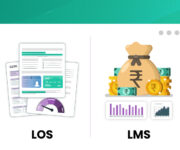Access to credit is essential for business continuity and growth—especially for small and mid-sized enterprises navigating cash flow gaps or funding expansion. Short-term financing solutions such as cash flow lending offer a lifeline during uncertain periods and enable long-term progress when applied strategically.
Today’s most widely used lending models are cash flow loans and asset-based loans. While the former evaluates a company’s future revenue potential, the latter relies on tangible assets as collateral. Each approach has its own criteria, use cases, and risk assessments, so lenders must understand their distinctions before deciding which to offer.
This blog post explores the key differences between cash flow lending and asset-based lending, helping NBFCs, banks, and credit professionals make more informed decisions.
Key Differences Between Cash Flow and Asset Based Lending
Before diving into the core differences between the two, here is a quick look at what each type of loan entails and its meanings:
What Is Cash Flow Lending?
Cash flow lending considers the overall financial health of the borrower’s business and grants loans based on future cash flows, which are basically the business’s profits and revenue margins.
After studying past cash flows and projecting future cash flows, the lender will determine the borrower’s payment capacity. This simply means that the borrower anticipates future revenues that will be used to repay the loan.
There is no asset or collateral backing the loan, which also renders the borrower’s creditworthiness an important criterion to be considered. For example, a company looking to service customer payments can utilise cash flow finance to meet the necessary obligations and repay the loan from the profits generated from the same business at a future date.
What Is Asset Based Lending?
Asset-based lending primarily takes into account the liquidation value of a company’s assets on its balance sheet and grants loans accordingly. Some of the most common assets that can be used as collateral against such loans include real estate, property, machinery & equipment, company inventory, accounts receivable, etc.
Asset-based loans are best suited for companies that have a strong balance sheet and need finance to fund their growth, especially businesses that do not want to restrict their borrowing criteria to future revenues or profits.
Key Differences Between Cash Flow Lending and Asset Based Lending
The following are some of the key differences between the two types of lending:
1. Focus
A major difference between cash flow and asset-based lending lies in the lender’s focus on ensuring them. Typically, cash flow based loans will focus on the business’s future projected cash flows, whereas asset-based loans will primarily focus on the assets in the balance sheet of the business.
2. Collateral
Cash flow-based loans do not require collateral and completely depend on the company’s ability to generate future income. The borrower’s credit rating plays an active part in deciding whether to grant these loans.
On the contrary, asset-based loans look at the company’s current assets and what can be taken as collateral. Such collateral assets can be utilised by the lender in the future in the event of a loan default on the part of the borrower. The lender has the right to possess a lien on the assets and use the sale proceeds of the same in case the borrower is unable to meet the payment obligations.
3. Suitability
Since every business is different from the other, the loan terms need to be tailored to fit the different criteria and needs. For example, a business that has its working capital tied up in assets primarily and cannot produce enough evidence to support future cash flows will not be granted a cash-based loan.
Similarly, companies that enjoy huge margins but do not have enough hard assets to offer as collateral are best suited for cash flow-based loans. Some examples could be marketing firms or even service-based companies.
4. Criterion
Since the focus of both types of loans is considerably different from the other, the criterion used to grant loans is quite different too.
For example, EBITDA (earnings before interest, taxes, depreciation, and amortisation) is a common criterion while granting cash flow based loans. This, along with a credit multiplier, is a common factor calculated by lenders. This method is a good way to loop in any risks that may arise by way of economic downturns or industry-specific shortfalls.
Typically cash flow based loans are easy to acquire as there is no collateral required to back the loans. This is most suitable for SMEs and MSMEs, and in the wake of the pandemic, banks and NBFCs can look to focus on cash flow-based lending to gain more customers.
However, it is also critical to invest in a robust automated system to safeguard the lender from potential defaults or NPAs.
Takeaway
Choosing between cash flow lending and asset-based lending ultimately comes down to the borrower’s financial profile and business model. While cash flow lending is ideal for companies with strong projected earnings but limited tangible assets, asset-based loans provide a structured option for businesses with valuable collateral on their balance sheet.
For lenders, offering the right loan type requires not just accurate evaluation but also streamlined processing and risk mitigation. That’s where Finezza’s lending solutions can make a real difference.
Our powerful Loan Origination System (LOS) and Loan Management System (LMS) are built to simplify underwriting, automate workflows, and reduce credit risk.
Get in touch with Finezza to find out how we can help you deliver faster, more reliable business financing.




Leave a Reply